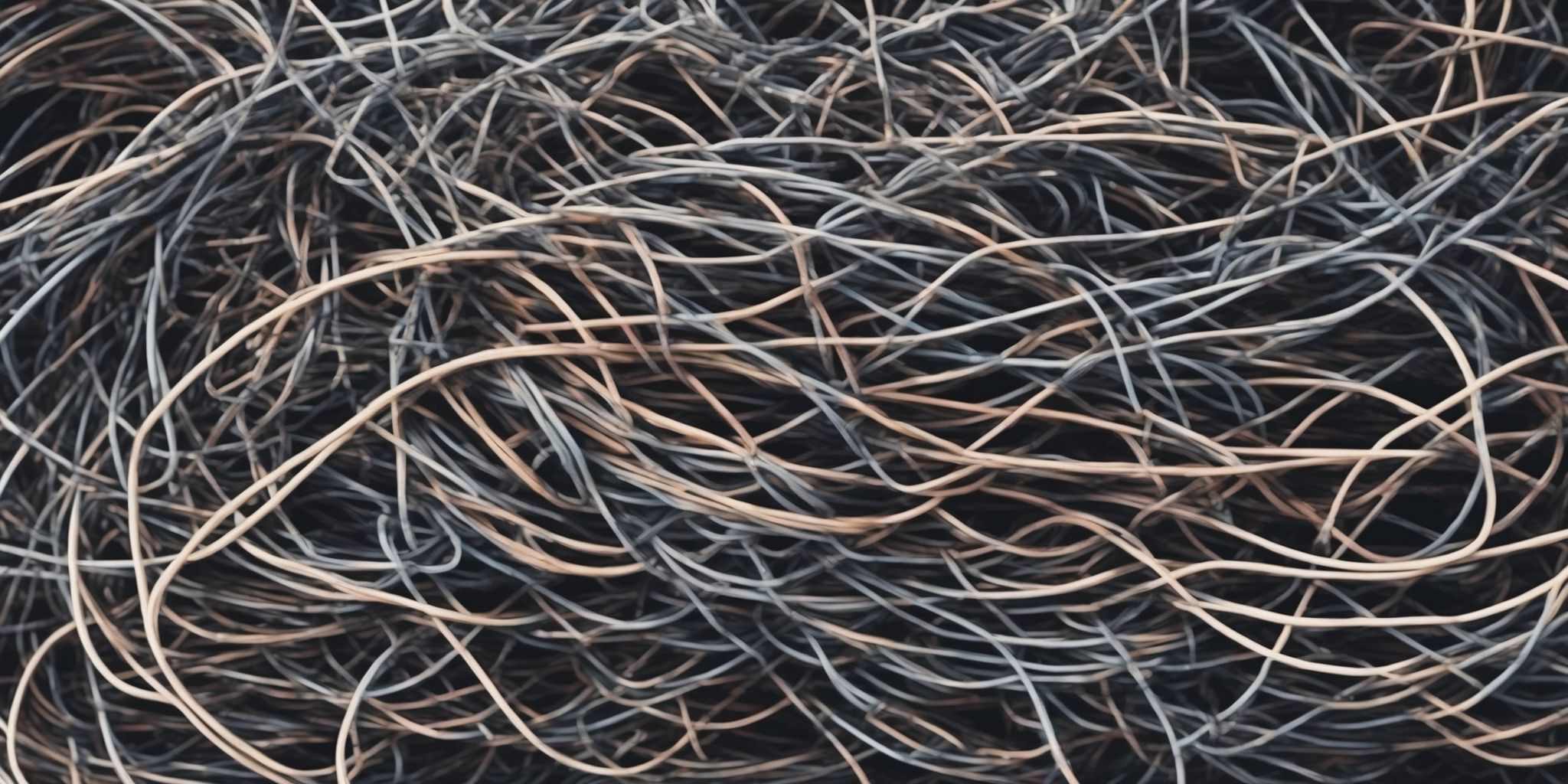Protecting Yourself: Preventing Credit Card Theft and Fraud
Imagine waking up one sunny morning, excited to make that long-awaited purchase or plan your dream trip, only to realize that your hard-earned money has vanished into thin air. Your heart sinks, and a feeling of violation washes over you as you learn that your credit card information has been stolen, leaving you vulnerable to fraud and theft. In this digital era, with technology advancing at lightning speed, protecting yourself from credit card theft and fraud has become more critical than ever.
Join us as we uncover the secrets to safeguarding your financial well-being and navigating the treacherous waters of the ever-evolving world of cybercrime. So grab a cup of coffee, settle in, and let's embark on this journey to secure your peace of mind and preserve your financial security!
Understanding Credit Card Theft and Fraud
What is Credit Card Theft?
Credit card theft refers to the unauthorized acquisition of someone's credit card information with the intention to use it fraudulently. It can happen in various ways, such as when thieves steal physical credit cards, skim card details using illegal devices, or obtain card information through online hacking. Once stolen, the thieves can use the compromised cards to make unauthorized purchases or withdraw cash, causing financial harm to the cardholder.
For instance, criminals may use stolen credit card information to make online purchases without the owner's knowledge. It is crucial to be aware of the signs of credit card theft and take preventive measures to protect oneself from this type of fraud.
What is Credit Card Fraud?
Credit card fraud refers to the unauthorized use of someone else's credit card for fraudulent purposes. It involves the theft of card information or the creation of counterfeit cards. This can lead to unauthorized charges, identity theft, and financial loss for the victims.
Examples of credit card fraud include:
- Scammers using stolen credit card numbers to make purchases online or in stores.
- Criminals using skimming devices to steal credit card information at ATMs or card readers.
- Fraudsters tricking people into revealing their credit card details through phishing emails or fake websites.
To protect yourself from credit card fraud, be vigilant for any suspicious activity on your credit card statements, regularly monitor your accounts, and report any fraudulent charges to your credit card issuer immediately.
How Credit Card Theft and Fraud Occur
Credit card theft occurs when someone illegally obtains your credit card information, allowing them to make unauthorized transactions. Fraud, on the other hand, involves the use of stolen credit card details to deceive or trick individuals or companies into providing goods, services, or funds. There are various methods through which credit card theft and fraud can happen. For instance, criminals may use skimming devices to steal card information at ATMs or point-of-sale terminals.
They may alsoengage in phishing schemes to trick unsuspecting individuals into revealing their card details.
Additionally, data breaches and hacking can expose credit card information stored by merchants or financial institutions. Staying vigilant and adopting security measures such as regularly monitoring your statements, using secure online shopping websites, and being cautious of suspicious emails can help protect against credit card theft and fraud.
Recognizing Signs of Credit Card Theft
Unusual Credit Card Charges
Unusual credit card charges can be an early indicator of credit card theft. Keep an eye out for any transactions that you don't recognize or didn't make yourself. It's important to regularly review your credit card statements and check for any suspicious activity.
For example, if you notice a charge for a luxury item or a purchase from a location you've never been to, it may be a red flag. If you see any unusual charges, contact your credit card issuer immediately to report the potential theft and to dispute any unauthorized transactions. Staying vigilant can help protect you from fraudulent activity and minimize the impact on your finances.
Missing or Lost Credit Cards
If you have lost or your credit card is missing, it could be an indication of credit card theft. Take immediate action to prevent potential fraudulent activities. Here's what you can do:
- Contact your credit card issuer to report the loss or theft.
- Monitor your credit card statements for any unauthorized charges.
- Consider placing a temporary hold or canceling the card to prevent unauthorized usage.
- Regularly check your credit report to ensure no fraudulent accounts have been opened in your name.
- Be proactive in safeguarding your credit cards by keeping them in a secure place and notifying your issuer immediately if they go missing.
Remember, quick response is crucial to minimizing the impact of credit card theft.
Unexpected Credit Card Statements
One sign of possible credit card theft is receiving unexpected credit card statements. If you notice charges or transactions that you don't recognize, it could indicate unauthorized use of your credit card. For instance, if you receive a statement showing purchases at a location you have never been to, it's important to investigate further. Similarly, if the statement shows unusually high charges or frequent small transactions, it could be a red flag. Take immediate action if you spot any discrepancies by contacting your credit card issuer to report the suspicious activity and request a fraud investigation.
Notifications from Credit Card Companies
When it comes to credit card theft, receiving notifications from your credit card company can be a valuable early warning system. These notifications can alert you to suspicious activities on your account, such as unauthorized charges or changes to your account information.
For example, you might receive an email or text message notifying you of a large purchase made in a location you haven't visited. By promptly reviewing these notifications and contacting your credit card issuer if anything seems amiss, you can take proactive steps to prevent further fraudulent transactions and protect your financial well-being. Stay vigilant and act swiftly when alerted by your credit card company to potential credit card theft.
Preventing Credit Card Theft
Protecting Physical Credit Cards
Keep your credit cards secure at all times. Avoid leaving them unattended or visible in public places. Consider using a wallet or cardholder that conceals the cards from prying eyes.
Be wary of skimming devices that criminals may use to steal card information. Inspect card readers carefully, especially at ATMs and gas pumps, for any signs of tampering.
Guard your credit card information when making purchases or transactions. Avoid sharing your card details with unfamiliar individuals or websites. Be cautious when providing your card to merchants and ensure they handle it securely.
Taking these simple steps can significantly reduce the risk of credit card theft and ensure the safety of your financial information.
Keep Your Credit Cards Secure
To keep your credit cards secure and protect them from theft, always be mindful of their physical whereabouts. Avoid leaving them unattended or visible in public places. When carrying your cards, keep them close to you, preferably in a secure wallet or a RFID-blocking sleeve to prevent unauthorized scanning.
Additionally, consider signing up for text or email alerts from your credit card issuer for any suspicious transactions. Regularly check your credit card statements for any unrecognized charges, and immediately report any lost or stolen cards to your issuer. By following these simple practices, you can reduce the risk of credit card theft and safeguard your financial information.
Be Wary of Skimming Devices
Be wary of skimming devices, as they are commonly used for credit card theft. Skimmers are small devices that criminals attach to card readers, which capture card information when the card is swiped. These devices can be placed on ATMs, gas pumps, or even handheld payment terminals. To protect yourself, check for any suspicious or loose card readers before using them, especially in unfamiliar or unattended locations.
Additionally, cover your hand when entering your PIN to prevent it from being recorded by hidden cameras. Stay vigilant and report any suspicious devices or transactions to your credit card issuer immediately.
Guard Your Credit Card Information
Guarding your credit card information is crucial in preventing credit card theft. Be cautious when disclosing your card details, especially in public or unfamiliar settings. Avoid sharing your credit card information over unsecured channels, such as email or unencrypted websites. Be mindful of who you provide your card details to, such as online merchants or service providers, ensuring they have secure payment systems in place.
Regularly review your credit card statements for any unauthorized charges and report them immediately to your card issuer. By keeping a close eye on your credit card information and taking proactive steps to protect it, you can reduce the risk of falling victim to credit card theft.
Securing Online Credit Card Transactions
When making online purchases, protecting your credit card information is crucial in preventing credit card theft. Shopping on secure websites that use encryption protocols (such as SSL) ensures that your data remains private and cannot be intercepted by hackers.
Additionally, using strong and unique passwords for your online accounts adds an extra layer of security. Be cautious of phishing emails that attempt to trick you into revealing your credit card details. Always double-check the website's URL, and refrain from entering your card information on unfamiliar or suspicious platforms. By practicing safe online habits, you can safeguard your credit cards from potential theft.
Shop on Secure Websites
When it comes to preventing credit card theft, it's important to shop on secure websites. Here are some actionable steps you can take:
- Look for HTTPS: Before entering any credit card information, ensure that the website's URL starts with "https" instead of "http". The "s" indicates a secure connection.
- Padlock Icon: Check for a padlock icon in the website's address bar. This indicates that the website has implemented strong security measures to protect your data.
- Reputable Merchants: Stick to well-known and reputable online merchants.
They are more likely to have robust security systems in place to safeguard your credit card information.
Remember, staying vigilant and cautious while shopping online can greatly reduce the risk of credit card theft.
Use Strong and Unique Passwords
Using strong and unique passwords is vital in the prevention of credit card theft. Here are some practical tips to create secure passwords:
- Use a combination of uppercase and lowercase letters, numbers, and symbols.
- Avoid using personal information or common words that can be easily guessed.
- Make passwords at least eight characters long, but longer is better.
- Use different passwords for each online account to minimize the impact of a data breach.
- Consider using a reputable password manager to securely store and generate unique passwords.
Remember, a strong password is like a lock on your credit card information, deterring potential thieves and ensuring your financial security.
Be Cautious of Phishing Emails
Phishing emails are a common tactic used by fraudsters to steal credit card information. These emails often appear to be from legitimate sources such as banks or credit card companies, but they are designed to trick you into providing your personal details. To protect yourself, always be skeptical of unsolicited emails asking for sensitive information. Avoid clicking on links or downloading attachments from suspicious emails. Instead, directly visit the official website of the company in question and log in securely to manage your account. Remember, your credit card information should never be shared through email.
Handling Credit Card Fraud
Contacting Your Credit Card Issuer
If you suspect credit card theft, contacting your credit card issuer immediately is vital. Promptly reporting the issue allows the issuer to take swift action, such as freezing your account and preventing further unauthorized charges. Most issuers have a dedicated hotline for reporting theft or fraud, which is available 24/7. When contacting them, provide all relevant details, such as the date and time of the incident and any suspicious transactions.
The issuer will guide you through the necessary steps to protect your account and may also initiate an investigation to resolve the issue efficiently. Remember, timely communication with your credit card issuer is crucial in mitigating the impact of credit card theft.
Disputing Fraudulent Charges
- If you notice unauthorized transactions in your credit card statement, take immediate action.
- Contact your credit card issuer or bank to report the fraudulent charges.
- Provide them with the necessary details, such as the date and amount of the unauthorized transaction.
- They will investigate the matter and may issue a refund if the charges are indeed fraudulent.
- It's important to review your credit card statements regularly to catch any suspicious activity promptly.
- Keep all communication documented for future reference and follow up as needed.
- Remember to be proactive in protecting your rights and finances when dealing with credit card theft.
Monitoring Your Credit Report
Monitoring your credit report regularly is important in detecting any signs of credit card theft. By checking your report, you can identify any unauthorized accounts or suspicious activity that may indicate fraudulent charges. Look out for unfamiliar addresses, loans, or credit inquiries. If you notice any discrepancies, contact your credit card issuer immediately to report the potential theft.
Additionally, consider using credit monitoring services or signing up for fraud alerts, which can notify you of any unusual activity on your credit report. The sooner you catch and address potential credit card theft, the better you can protect your financial well-being. Stay vigilant and take action promptly to safeguard your credit.
Conclusion
Credit card theft and fraud are significant threats in today's digital age. To protect yourself, there are several effective steps you can take.
Firstly, always treat your credit cards as if they were cash, keeping them secure and never lending them to others. Regularly monitor your financial statements and credit reports for any suspicious or unauthorized activity. Be cautious when giving out your credit card information over the phone or online, ensuring you are providing it to reputable and secure sources. Utilizing strong and unique passwords for your online accounts, as well as enabling two-factor authentication, can add an extra layer of security. It is also advisable to avoid using public Wi-Fi networks for any financial transactions. If you suspect your credit card has been compromised, immediately contact your credit card company and report the incident. By proactively protecting yourself and staying vigilant, you can greatly reduce the risk of credit card theft and fraud.


